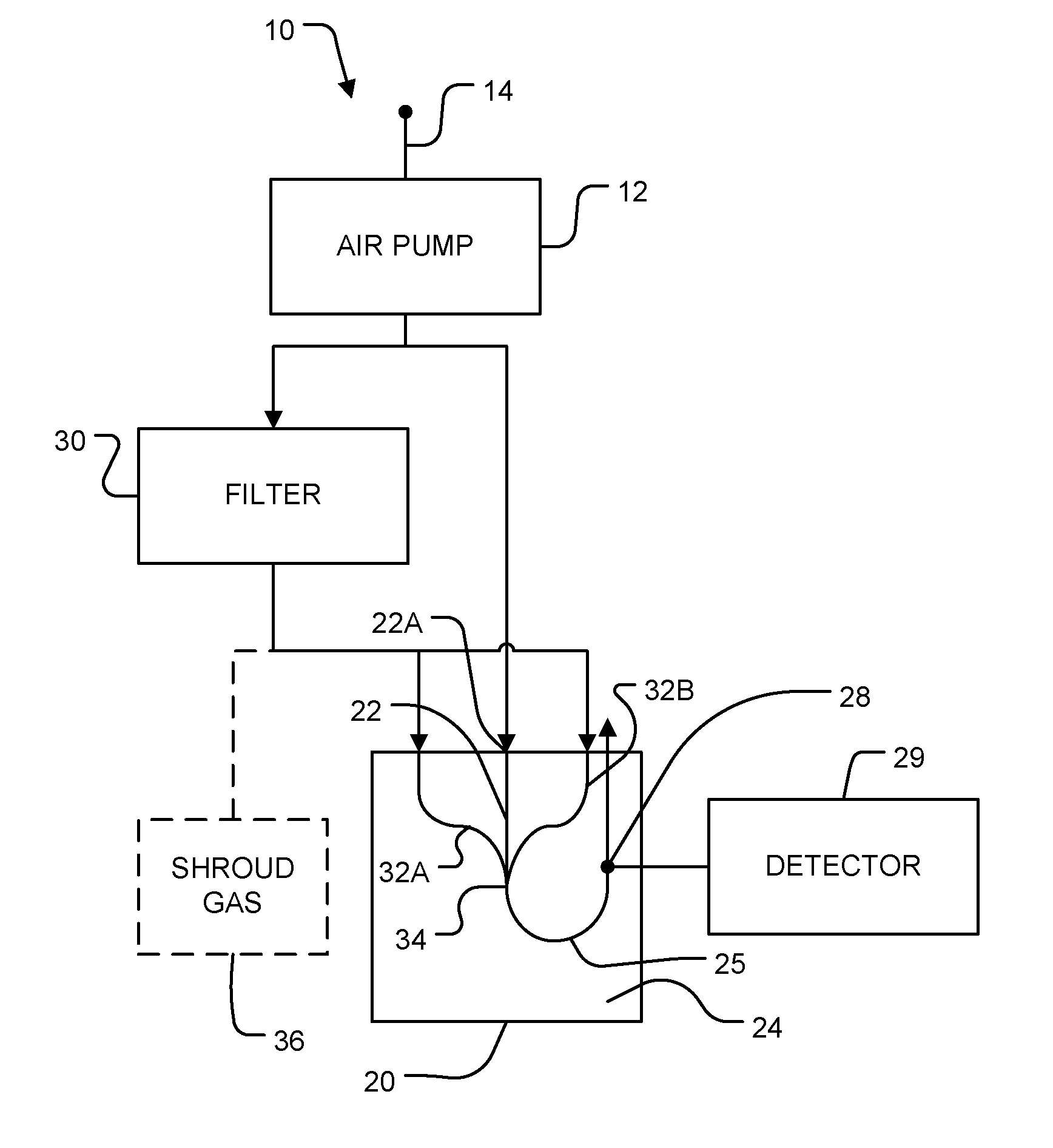Methods and apparatus for detecting particles entrained in fluids
- Summary
- Abstract
- Description
- Claims
- Application Information
AI Technical Summary
Benefits of technology
Problems solved by technology
Method used
Image
Examples
example prototype embodiment
A. Channel Fabrication and Characterization
[0077]Microchannels for characterization and separation experiments were fabricated using standard photolithography techniques. The photolithography process (using SU-8 3050, Microchem Corp.), produced a negative mold of the channel. The mold was then used to form channels made of polydimethylsiloxane (PDMS), a two-component silicone polymer. The PDMS (Sylgard® 184, Dow Corning), was combined in a ratio of 10 parts base to 1 part hardener before being mixed and poured on the mold (“Piece A”). A second piece was prepared by pouring approximately 10 mL of PDMS onto a glass microscope slide with side walls formed with aluminum foil; this piece forms the fourth channel wall (“Piece B”). The two pieces of PDMS were degassed, cured in an oven at 80° C. for 2.5 hours, and then peeled off from their respective substrates. Holes were punched through Piece A to provide access to the channel inlets. Both pieces were treated with an oxygen plasma for 4...
PUM
 Login to View More
Login to View More Abstract
Description
Claims
Application Information
 Login to View More
Login to View More - R&D
- Intellectual Property
- Life Sciences
- Materials
- Tech Scout
- Unparalleled Data Quality
- Higher Quality Content
- 60% Fewer Hallucinations
Browse by: Latest US Patents, China's latest patents, Technical Efficacy Thesaurus, Application Domain, Technology Topic, Popular Technical Reports.
© 2025 PatSnap. All rights reserved.Legal|Privacy policy|Modern Slavery Act Transparency Statement|Sitemap|About US| Contact US: help@patsnap.com



